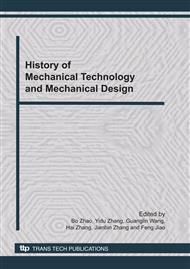p.224
p.228
p.232
p.236
p.242
p.246
p.250
p.255
p.259
Cutting Force Model of Aluminum Alloy 2014 in Turning with ANOVA Analysis
Abstract:
In the present study, aluminum alloy 2014 was selected as workpiece material, cutting forces were measured under turning conditions. Cutting parameters, the depth of cut, feed rate, the cutting speed, were considered to arrange the test research. Mathematical model of turning force was solved through response surface methodology (RSM). The fitting of response surface model for the data was studied by analysis of variance (ANOVA). The quadratic model of RSM associated with response optimization technique and composite desirability was used to find optimum values of machining parameters with respect to cutting force values. The turning force coefficients in the model were calibrated with the test results, and the suggested models of cutting forces adequately map within the limits of the cutting parameters considered. Experimental results suggested that the most cutting force among three cutting forces was main cutting force. Main influencing factor on cutting forces was obtained through cutting force models and correlation analysis. Cutting force has a significant influence on the part quality. Based on the cutting force model, a few case studies could be presented to investigate the precision machining of aluminum alloy 2014 thin walled parts.
Info:
Periodical:
Pages:
242-245
Citation:
Online since:
November 2010
Authors:
Price:
Сopyright:
© 2011 Trans Tech Publications Ltd. All Rights Reserved
Share:
Citation:


